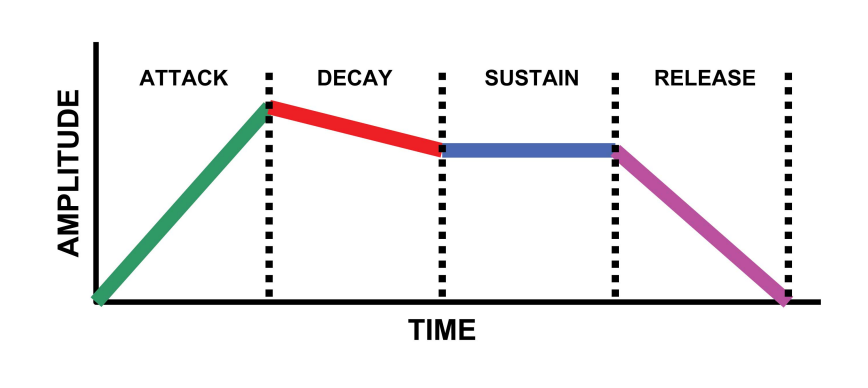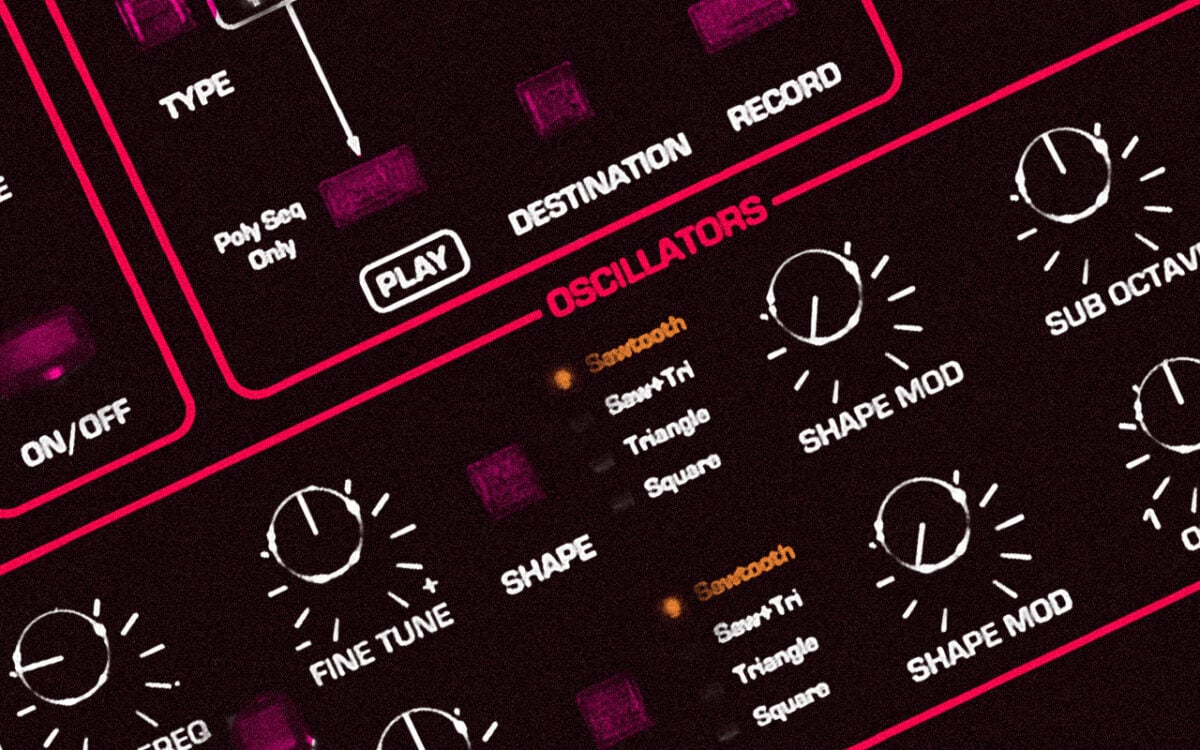Presets are a great way to quickly pull up a sound on a synthesizer or virtual instrument and start creating. But sometimes, the only way to get exactly what you’re looking for is to go under the hood and tweak it to your liking.
In this article, I’m going to explain the main elements that all synthesizers share, as well as give you the basic info you need so that you know where to reach when you want to tweak.
The main components of sound synthesis
Since the beginning of analog synthesizers, there have always been three main components required to create sound. First, we need an oscillator, something that will generate the sound waves. Next, that oscillator will be sent through a filter in order to manipulate the sound. Finally, it needs to go through an amplifier in order to – you guessed it – amplify the sound.
Some of these terms may seem familiar from other applications, but let’s define them a little further:
OSCILLATOR
The oscillator is the first place to go when you want to drastically change the sound of your synth. Depending on the synth you are using, you can have different options of waveform type. Some popular ones are Sawtooth Waves, Sine Waves, and Square Waves.

On some modern synths (like Xfer’s Serum), you have advanced capabilities with the oscillator section through Wavetables. These wavetables act as super complex oscillator patterns and can produce incredible sounds, especially when combined.
The first place I always look when adjusting a sound is the oscillator – is it too harsh? Maybe try a Sine Wave. Does it need more edge? Maybe try a Sawtooth Wave or Square Wave.
FILTER
The filter is the next major component of any synthesizer. The classic filters are lowpass, highpass, and bandpass. These filters usually control the frequency range of the oscillator and therefore allow you to adjust the timbre of the instrument.
This is a great section to reach for when you want to create a “muffled” or “distant” sound by rolling off the high frequencies. You can also create an effective riser or sweep effect using a bandpass filter.

AMPLIFIER
The final component is the amplifier section. Usually, this contains controls for the envelope: attack, decay, sustain, and release (ADSR).

The envelope of your sound will determine how the synth responds to your playing. A long (or slow) attack will make it less punchy and create a “swell” at the start of the notes. A long release will make the notes ring out, even after you’ve let the keys up. By manipulating these controls, you can create a wide variety of different feels and sounds.
What about modulating these controls?
With a solid understanding of the basic components, let’s take a look at some of the ways you can modulate these:
LFOs
Low-Frequency Oscillators (LFOs) are a special type of oscillator that allows you to control other components of the synthesizer based on a frequency that you specify (usually between 0.1 – 20 Hz, below the range of human hearing).
This doesn’t mean that the synthesizer is creating any (audible or inaudible) sound with the LFO – in fact, it almost never does. But it can be used to create “wobble” or patterns by affecting, say, the amplifier level at whatever rate you set the LFO.
Some LFO’s allow you to sync to the tempo of your session, which is great for creating an eighth note or quarter note pattern.
While the ins and outs of LFOs and how to use them are a topic all their own, it is useful to know that they can be used to modulate the basic controls of your synthesizer.
ADSR on the filter
Some synthesizers, like Serum, allow you to control the envelope of a filter. This allows you to create swelling effects, stabs, plucks, and more with great precision. The controls are similar to the amplifier ADSR, but this ADSR will only affect the Filter, not the volume of the output.
Additional effects
Many modern software-based synthesizers include the ability to add effects with incredible control and precision. These features vary based on which synthesizer you are using, but can help to craft unique sounds and patches.
What to do next?
Now that you understand synthesizers in their most basic form, you’ll be able to manipulate and control the sounds no matter what synth or plug-in you’re using. Just start by identifying these main components and you’ll be more in control of your patches in no time.
The best way to learn anything, in my opinion, is to start doing it. Play around with the controls, twist the knobs, and see what happens.
What are your biggest challenges when trying to adjust your synth sounds?What are your favorite extra features/controls?
September 5, 2017

.svg)
.svg)




